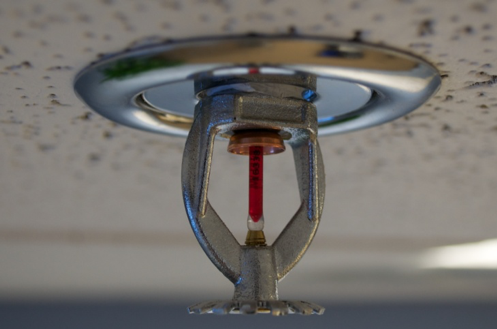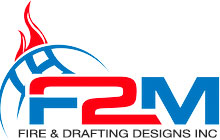Fire Sprinkler System Design in New York: Things You Need to Know
Do you need a fire sprinkler system design in New York? The best protection against fire hazards comes from getting a suitable fire protection system according to your building or space. Fire sprinkler systems are among the most popular fire protection methods. Due to automation in advanced fire sprinkler systems, it is easy to douse and restrict the flames. It keeps the fire from spreading, which saves lives and prevents excessive fire damage to properties.
Potential fire risks keep increasing daily because of the persistent rise in the use of technology. Faulty wiring, excessive heat generation in computing machines, or even flammable products in an office or industry – all these pose a viable fire hazard. Therefore, they require the implementation of strict safety measures.
Below, we will discuss how fire sprinkler systems work.
How a Fire Sprinkler System Works
With an adequate distribution of sprinkler heads over the area, when heat or smoke sensors trigger the alarm, the fire sprinkler system activates. The glass bulb in a sprinkler head bursts due to heat exposure and water flows from the sprinkler heads.

(Source)
Water comes from a series of pipes that are fixed into the building. These pipes connect to a fire pump that maintains a standard pressure of water as sprinkler heads release water to douse the fires.
Further, control valves and drain systems provide a wider control over the fire sprinkler system. It becomes easy to detect if a valve is open or shut, which then leads to the rectification. These control valves and drains are in a “valve room” that is always under maintenance and thoroughly ready for fire emergencies.
Fire Sprinkler System Design in New York: Things to Remember
There are a few vital key points that will help you start designing a fire sprinkler system in New York or any other place in the US.
Purpose of Water Supply
Automatic fire sprinkler systems heavily rely on a consistent supply of water. The source of water supply for the sprinkler system is, therefore, of paramount importance. A municipal water supply is a feasible option to connect your fire sprinkler pipes too, for example, fire hydrants.
Other than the municipal water supply, you can rely on a few other sources to supply water to your fire sprinkler system. These other sources can be:
- Gravity Tanks
- Water Towers
- Underground Water Tanks
- Ponds, lakes, rivers, or even reservoirs
These static sources of water supply will require more pressure for water extraction (underground water tank). Therefore, they consume more power.
Rules and Regulations
The National Fire Protection Association (NFPA) of the US imposes certain rules and regulations. They affect various aspects of a fire sprinkler system. An example of the codes and rules of the NFPA is the NFPA13 rule. Under this rule, fire sprinkler system installation in a residential space must comply with specific guidelines. You can find a list of other standards and codes here.
Types of Fire Sprinkler Systems: Environment of the Building
The type of fire sprinkler system you choose for your building is essential as well. For example, if your building is in a warm climate or a heated place, the wet pipe system is the best. This system has water in the pipes all the time. Once the alarm rings, they release water to douse the fires.
For unheated buildings in colder regions, a dry pipe system is best. These pipes contain air or nitrogen in them. When the fire alarm rings, air releases from the pipe, and water begins flowing through the sprinkler heads. Since the pipes contain air, you don’t face problems with water freezing in the pipes.

(Source)
In places holding highly combustible materials, an effective fire sprinkler system is necessary. This system turns on all the sprinkler heads when a fire emergency occurs. This way, all the sprinkler heads release water, dousing the fire as quickly as possible to prevent excessive fire damage. It is essential for places with flammable material and processes.
Calculations
Before designing a fire sprinkler system, certain calculations are necessary. These calculations determine the water flow rate, the discharge rate, the coverage area of every sprinkler head, etc. It allows for an effective design of the fire sprinkler system in a building, enabling an operational fire safety system.
Fire Sprinkler System Design in New York: Consult A Design Professional
It is critical to get in touch with qualified engineers and architects of fire sprinkler systems if you are designing one for your building in New York. At F2M Fire & Drafting Designs Inc., we are certified professionals who can guide your fire sprinkler system design process from start to finish.
Call us at (718) 928-3009 for a free consultation & quote. You can also email us at info@f2mfadds.com.
Sources:
- https://sprinklerage.com/fire-sprinkler-design/
- https://www.qrfs.com/blog/374-the-elements-of-fire-sprinkler-system-design/#water
- https://www.nfpa.org/Codes-and-Standards/All-Codes-and-Standards/List-of-Codes-and-Standards
- https://www.nfpa.org/Public-Education
- https://www.designingbuildings.co.uk/wiki/Overview_of_automatic_sprinkler_system_design_and_operation
- https://blog.societyinsurance.com/7-tips-ensure-building-sprinkler-system-will-protect/

[…] alarms and sprinkler systems are also important in case of fire emergencies. Fire alarms warn the residents to evacuate the […]